What's the difference between the different types of stone fruit, like peaches and nectarines? As it turns out, the differences are skin-deep.
A Guide to the Most Popular Types of Stone Fruit

What is stone fruit?
Stone fruit (also known as a drupe) is a variety of fruit that features a stone or pit in the center. The most popular varieties are in the genus prunus, which include peaches, plums and apricots.
Stone fruit isn’t limited to this genus, though. Coconuts, mangos, olives, dates, cashews and coffee are all examples of drupes.

How to Buy Stone Fruit
Don’t squeeze those poor fruits to tell if they’re ripe—you’ll end up bruising them. Instead, give them a whiff. If they smell fragrant, they’re ready to eat! If not, store stone fruit in a paper bag on the counter until that intoxicating smell appears. Once ripened, store stone fruit in the crisper drawer in the fridge.
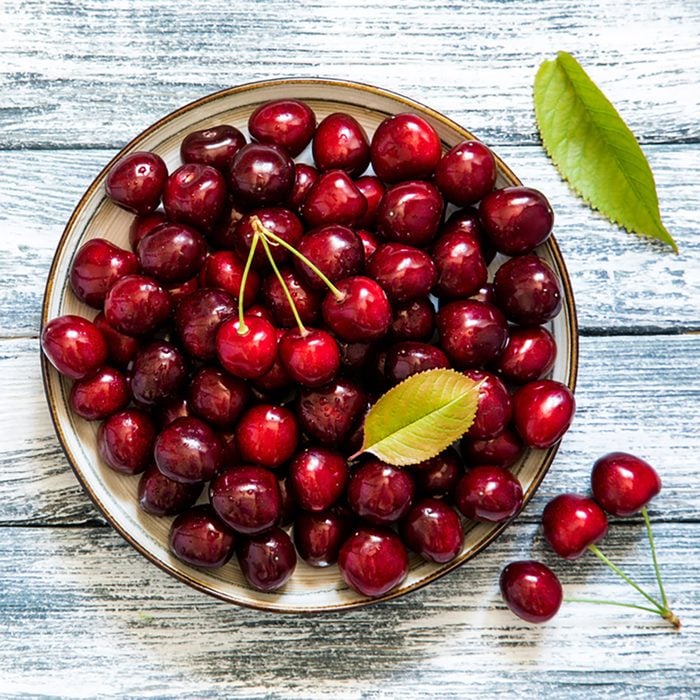
Cherries
Cherries are the first stone fruit to pop up in the spring, and they’re usually available from April to July. There’s a baffling amount of variety in color and taste, but all cherries are packed full of antioxidants. When it comes to flavor, some cherry varieties are sour, bright and tart while others are firm and sweet.
If you can get your hands on sour cherries, they make the best pies! The sweet varieties are perfect for everything from ice cream to barbecue sauce and jam, including these recipes with fresh cherries. And if you just love making recipes with cherries, make sure you have a cherry pitter to make the job easy.
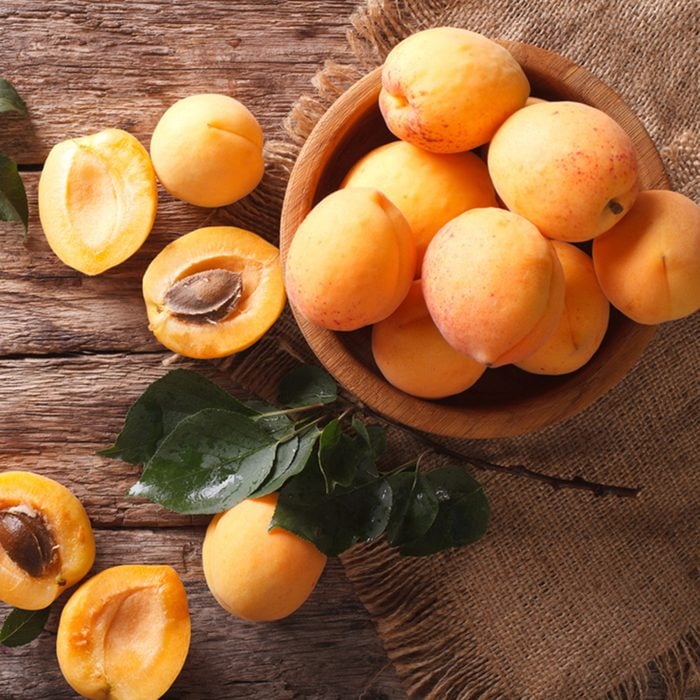
Apricots
Apricots look like small peaches. They’re rich in beta-carotene and vitamin A, which is beneficial for promoting eye health. They have a tart flavor that’s perfectly balanced by a sweet, creamy texture. They’re usually only available between May and July, and they don’t last very long once they’re picked from the tree—so enjoy them while you can!
Apricots are our go-to fruit for making jam thanks to their pectin-rich skins. They’re also good for dehydrating since they maintain a meaty texture when dried.

Peaches
You’ll find the traditional fuzzy, heart-shaped peaches with yellow flesh in every grocery store, but you may also find a few different varieties floating around. Donut peaches are flattened and round with low acidity, whereas white peaches are super sweet with a luscious texture. Peaches are available year-round in the grocery store but best enjoyed between May and October. Peach season is short—but if you know how to store peaches, you’ll have juicy, fresh-tasting fruit all year round. For best results, learn how to pick ripe peaches.
In addition to being rich in vitamins and minerals, peaches may also help promote healthy digestion. So pick up a few peaches to add to your favorite summer salad, toss them on the grill to add depth of flavor or use them to make an incredible cobbler or peach pie.

Nectarines
A nectarine looks a lot like a peach and tastes a lot like one too! Nectarines even share the same season, from about May to October. The major difference between the two is that nectarines have smooth skin, as opposed to peach’s fuzzy exterior. They have a slightly firmer texture, but you can use them interchangeably in recipes that call for peaches.
Like peaches, nectarines are rich in vitamins and minerals, especially immune-boosting vitamin C. They’re great on the grill and pair especially well with cheese to create an incredible appetizer crostini. But don’t stop there! Try these juicy nectarine recipes.
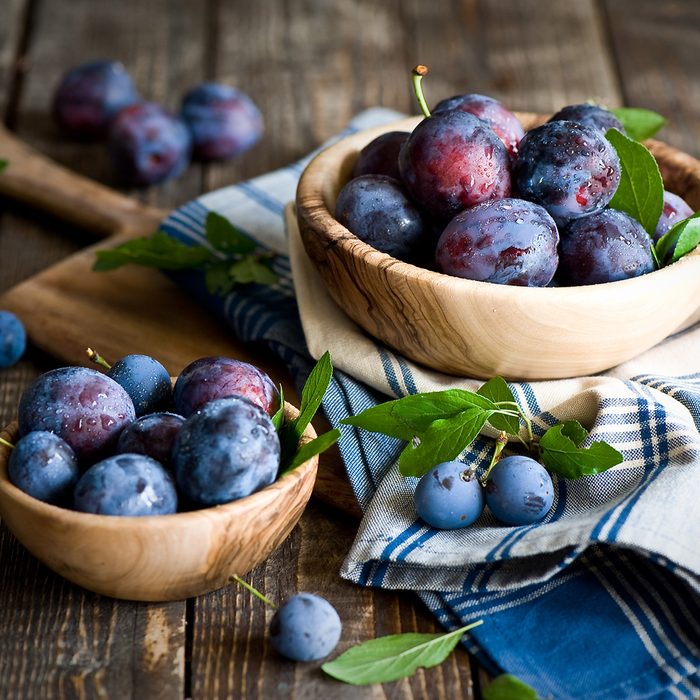
Plums
The classic plum is bright purple, but they actually come in all colors. Unlike most other stone fruit, the skin on plums is usually smooth instead of fuzzy. They have super juicy flesh, so make sure you have a napkin handy when eating them raw! They’re usually not ripe until May, but they stay in season all the way until November, so don’t be afraid to add them to your holiday menu.
Our favorite plum recipes involve dessert, but they’re also great on salads or appetizer platters. No matter how you serve plums, you’ll benefit from their nutrients and phytochemicals that help to lower inflammation.
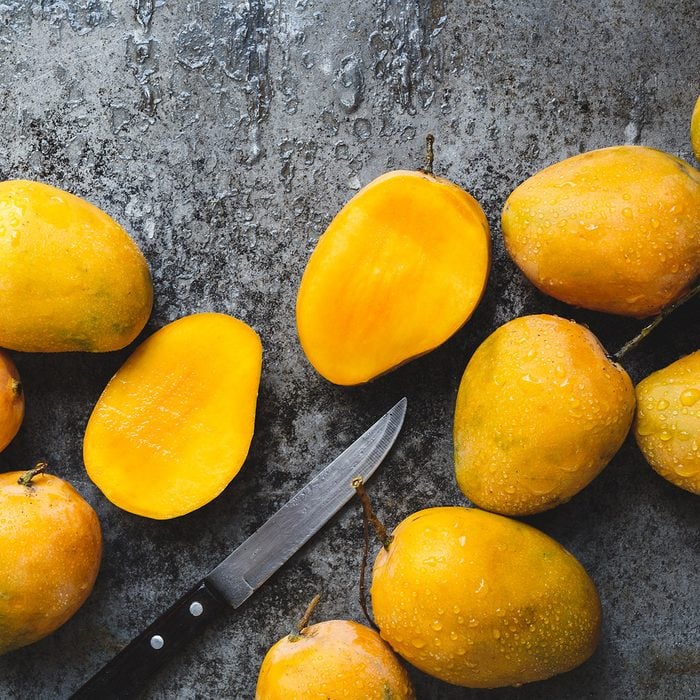
Mangoes
They don’t have a large pit in the center, but mangos are still included on this stone fruit list. Mangos are native to Southeast Asia and grow in other warm climates like Florida, California and Mexico. You can find them in the grocery store year-round, but their peak season is May to October. Like most stone fruit, they’re high in antioxidants, vitamins and essential minerals.
Mango skin has an unpleasant taste, so we recommend peeling it before moving on. The seed can be a little tricky to remove, too, but we have step-by-step instructions that make it much easier. These sweet fruits are a no-brainer for dessert, but they also have a tangy flavor that makes them an excellent choice for savory applications like mango salsa.

Plumcots, Apriums and Pluots
There are many hybrid stone fruit varieties that cross plums and apricots. The name varies depending on the emphasis of each fruit. Plumcots were coined by Luther Burbank and were the original hybrid stonefruit. In the late 1980s, Floyd Zaiger created several additional hybrids, like plum-dominate pluots and apricot-dominate aprium.
Use these hybrids in any recipe that calls for plums or apricots, and you won’t be disappointed by the result!
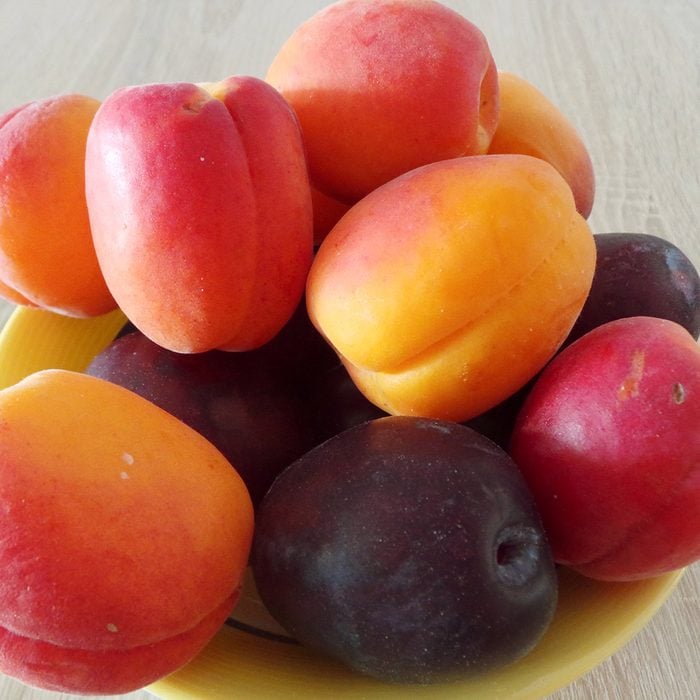
Peacotums
These peach-apricot-plum hybrids were also developed by Floyd Zaiger. The fruit looks like a peach, but it tastes and smells much more like a plum or an apricot. It has the same juicy factor as other prunus stonefruit but with a more mild flavor and a nice balance between sweetness and acidity.



















